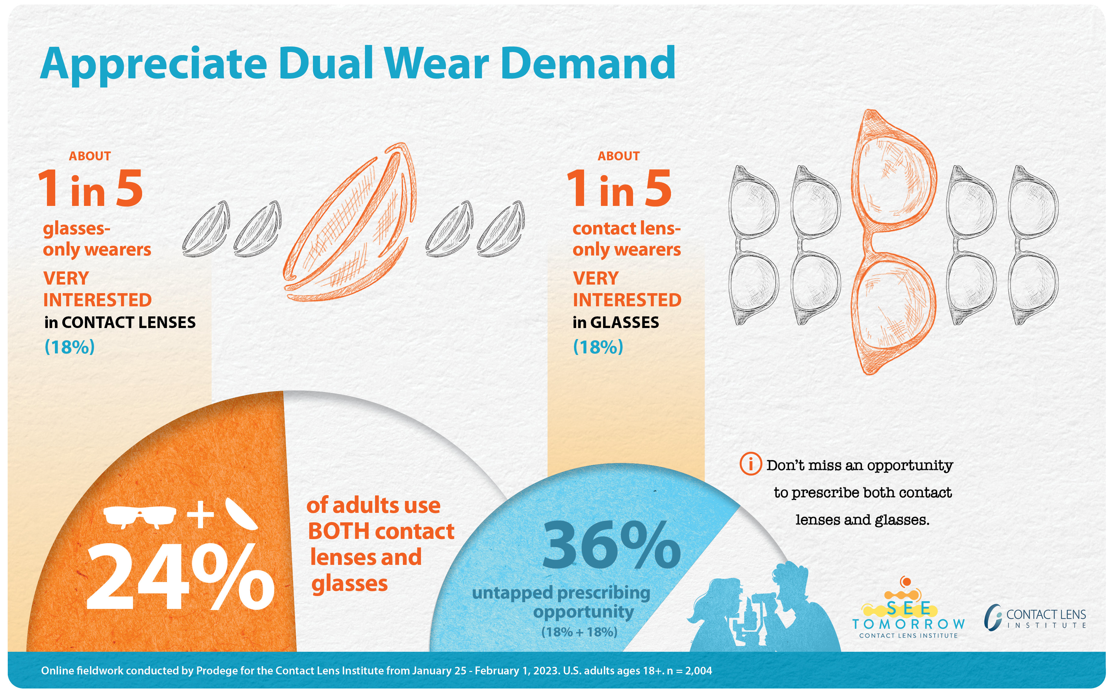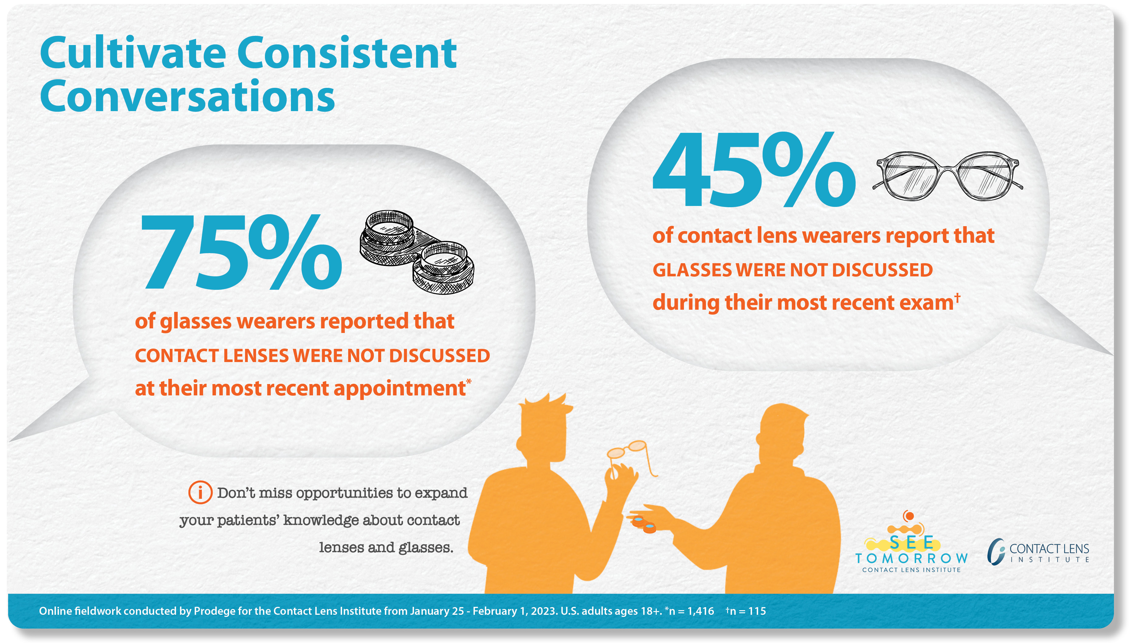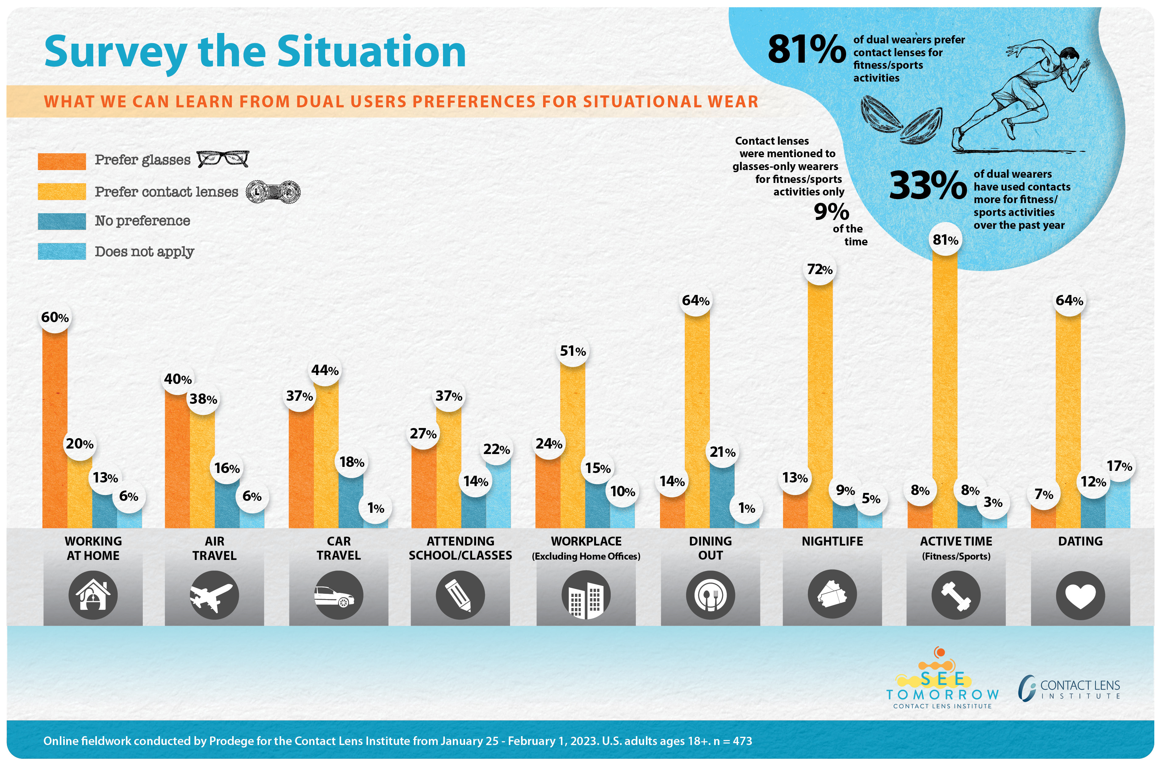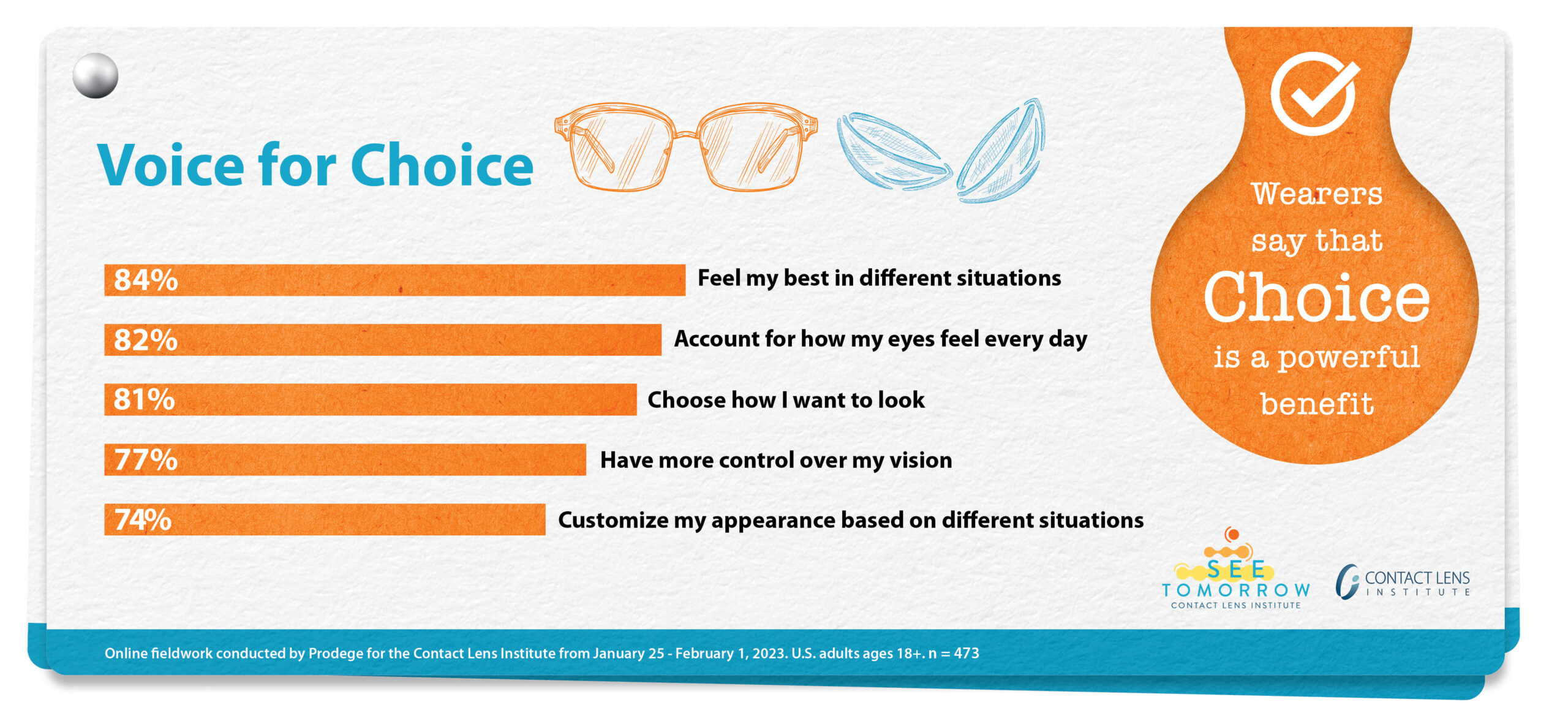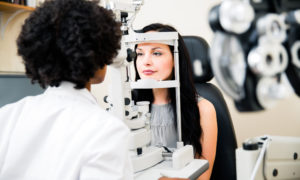
Panel participants at Contact Lens Institute’s panel at Vision Expo East on March 17, in which findings of a new study on consumers’ preferences for wearing both glasses and contact lenses were shared. Pictured left to right: Michele Andrews, OD, Contact Lens Institute; Jennifer Tsai, OD, LINE OF SIGHT; Inna Lazar, OD, Greenwich Eye Care; Andrew Bruce, LDO, ABOM, NCLE-AC, ASB Opticianry Education Services; and Alysse Henkel, The Vision Council.
March 22, 2023
New research shows that a significant number of vision-corrected U.S. adults are interested in purchasing both contact lenses and glasses, representing a largely untapped ‘dual wear’ growth opportunity for the eyecare community. The Contact Lens Institute (CLI) shared this insight and related findings during an on-stage panel at Vision Expo East on March 17, as part of its See Tomorrow initiative.
CLI recently surveyed more than 2,000 Americans, asking them a wide range of questions about what they use to improve their vision, what drove their choices and how their preferences may vary based on other factors in their lives.
“We received nothing but positive feedback about our See Tomorrow efforts over the past 18 months, which pinpointed growth opportunities through unique consumer data. Our latest research highlights that a more pronounced focus on dual wear could benefit eyecare professionals, retailers and patients alike,” said Michele Andrews, OD, CLI chairperson and panel moderator.
Joining Dr. Andrews on the expert panel at Manhattan’s Javits Center were Andrew Bruce, LDO, ABOM, NCLE-AC, of ASB Opticianry Education Services in Vancouver, Wash; Inna Lazar, OD, of Greenwich Eye Care in Old Greenwich, Conn. and Pro Eye Care in Darien, Conn; and Jennifer Tsai, OD, of LINE OF SIGHT in New York, N.Y., all of whom are 2023 Contact Lens Institute Visionaries; and Alysse Henkel, senior director, Market Research & Analytics with The Vision Council.
While only one-in-four (23.6 percent) adults reported using both contact lenses and glasses, there’s considerable interest in dual wear among the remaining population. Almost one-in-five glasses-only wearers are very interested in contact lenses (18 percent), and the same percentage of contact lens-only wearers are very interested in glasses. In total, this represents an unrealized prescribing opportunity for more than one-third of all patients.
Other Articles to Explore
Seizing the opportunity requires a simple, but largely underutilized, approach from the eyecare community: having the conversation. Seventy-five percent of glasses wearers reported that contact lenses were not discussed at their most recent appointment, although such conversation would help at least one in five of them strongly consider wear. Likewise, 45 percent of contact lens wearers report that glasses were not discussed during their most recent exam; where that did occur, more than half of the conversations were about backup options.
Identifying situational wear can also increase consumers’ consideration of embracing both contact lenses and glasses. These include in- and out-of-home vision correction. Among dual wearers, contact lenses are clearly preferred for out-of-home situations by factors of 0.3X to 10X; glasses are strongly preferred for working at home by a threefold factor.
Showcasing contact lenses for active settings may also resonate. Eighty-one percent of dual wearers say they are likely to choose contact lenses for fitness/sports use and 33 percent of dual wearers report wearing their contacts more over the past year for such activities. Yet among glasses-only wearers who discussed contact lenses during their last eye exam, their application for sports and fitness were only raised nine percent of the time.
“Our research also found that dual wearers overwhelmingly like the ability to choose their own path. Having both contact lenses and glasses on hand empowers them to make the best choices for themselves each day,” said Dr. Andrews. “About 8-in-10 dual wear respondents agreed that having choice is a powerful benefit, including feeling their best in different situations, accounting for how their eyes felt every day, choosing their own look and having more control over their vision. Why not give them those opportunities?”
An extensive report with additional reporting categories and analysis will be published in April 2023. Online fieldwork was undertaken January 25-February 1, among 2,004 users of prescription vision correction devices, ages 18 and older and residing in the U.S. Here are additional findings:
